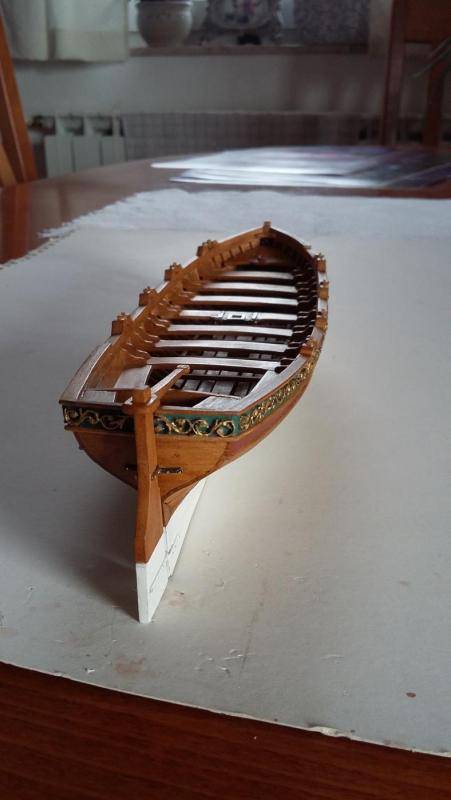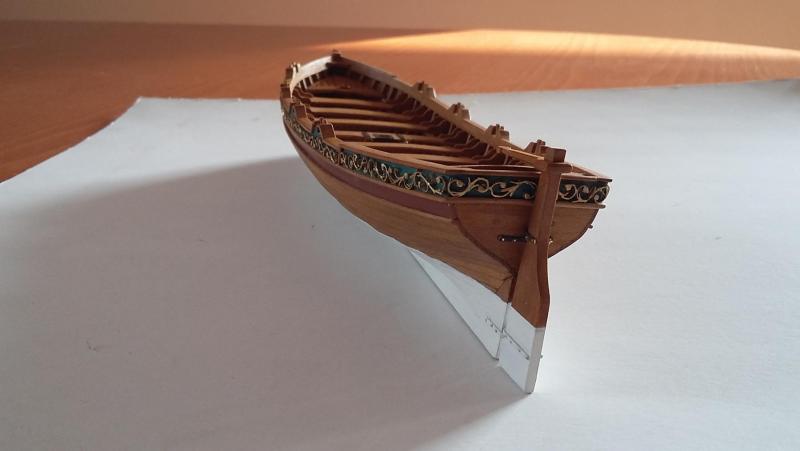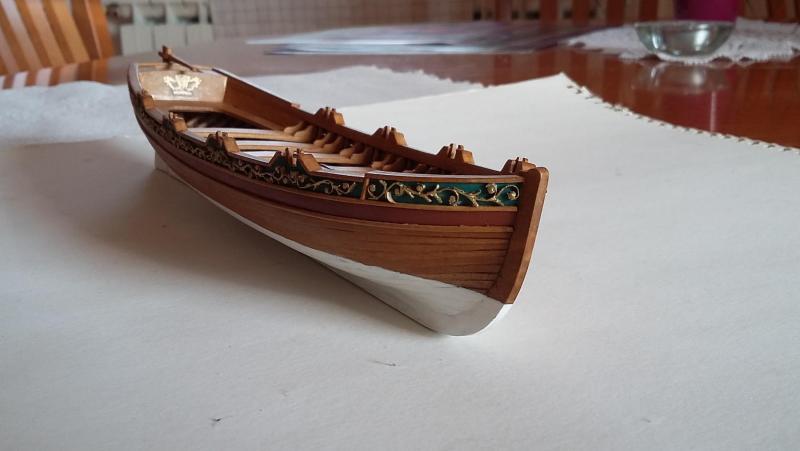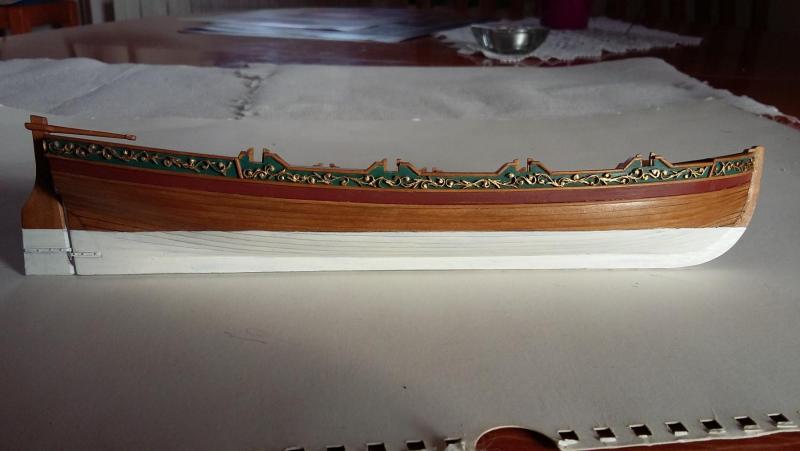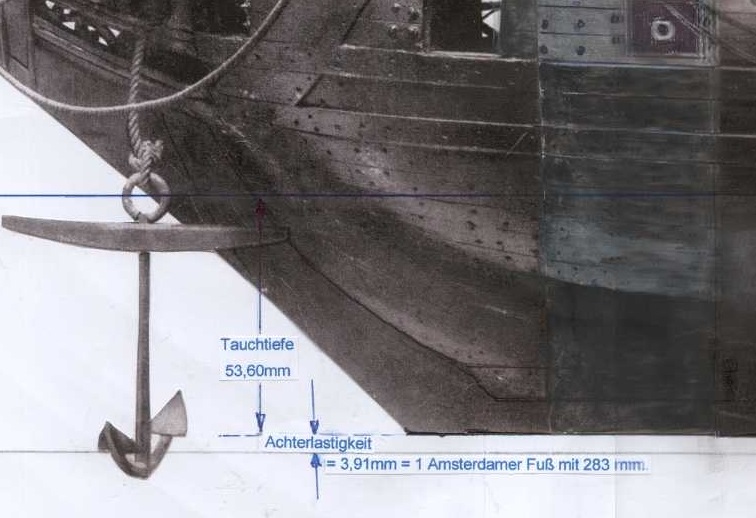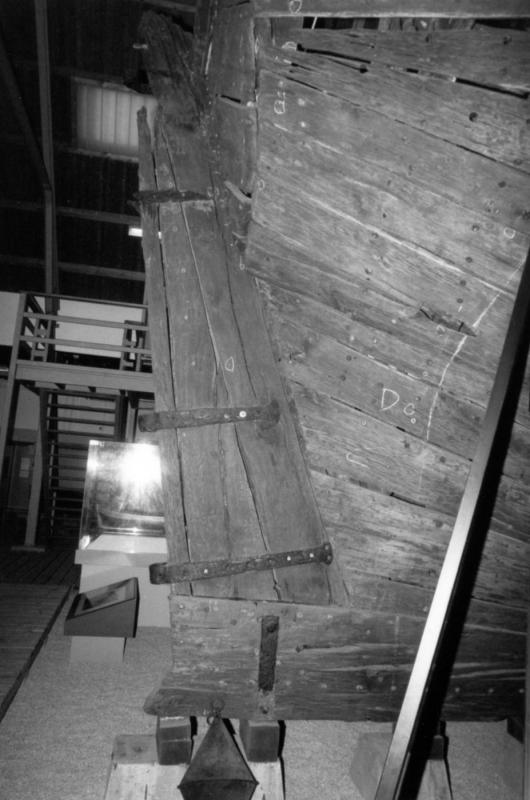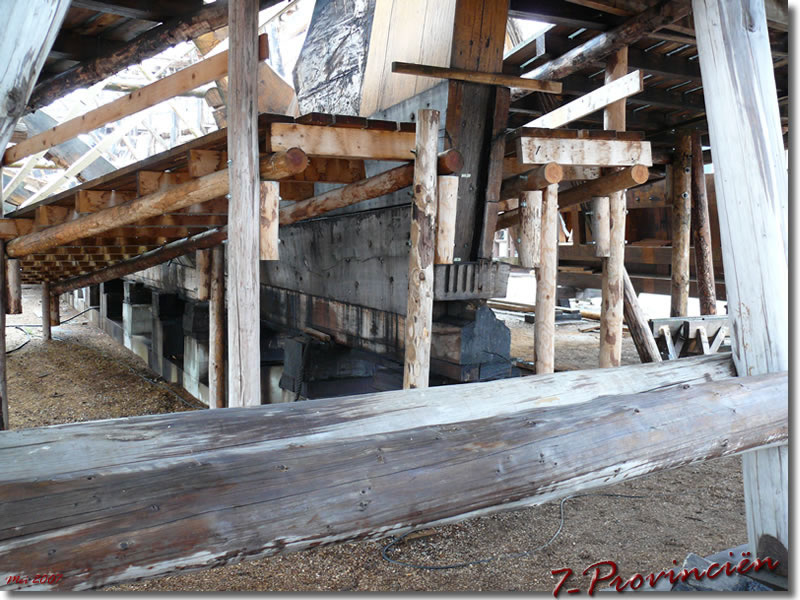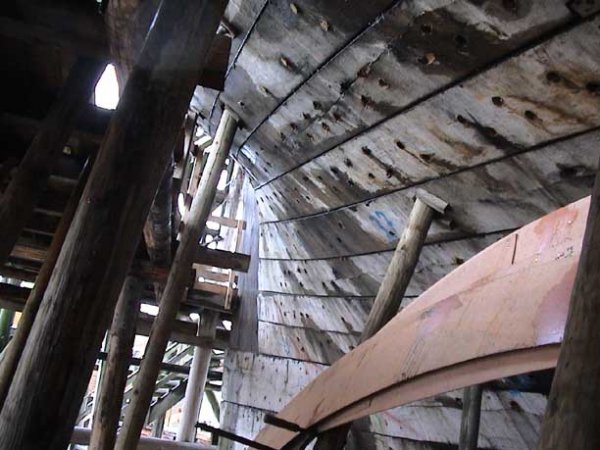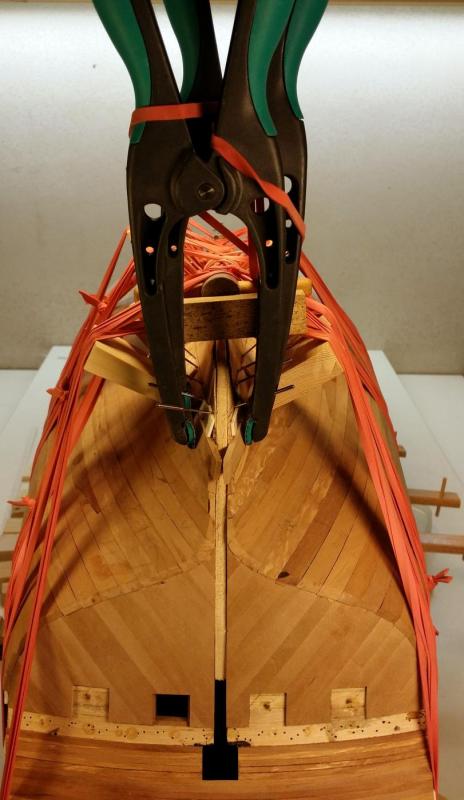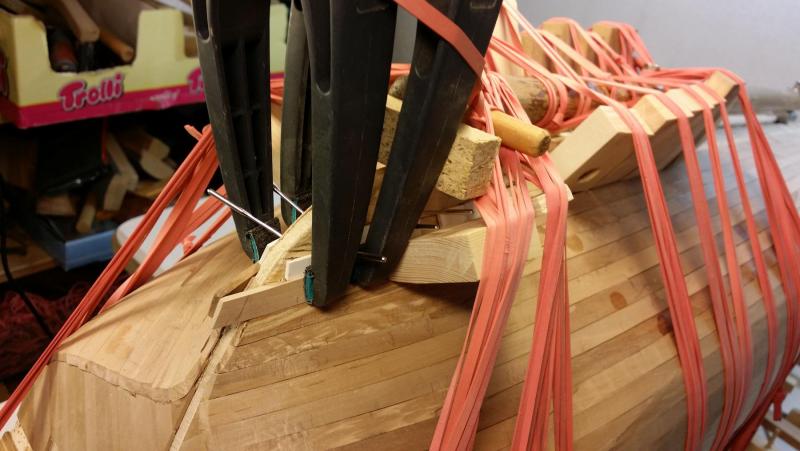-
Posts
389 -
Joined
-
Last visited
Content Type
Profiles
Forums
Gallery
Events
Everything posted by Drazen
-
Just another discussion point: The color of the letters “DE – 7 - PROVINCIEN”: Dik suggests GOLD. Both models in Lelystad have some sort of darker blue or black. Ab Hoving said gold would be OK. I am just checking if I have overseen something important… Dražen
- 487 replies
-
- ship of the line
- 80 guns
-
(and 1 more)
Tagged with:
-
@ Jan The topic of right name-writing… I have been discussing it several times with Ab Hoving. He says, according to the old Dutch language it should be the “PROVINCIEN” (Dik & Blom suggest it too). Since I do not understand Dutch and especially not the Old-Dutch, I am helpless here. Maybe here in the forum somebody knows somebody knowing somebody knowing the old Dutch language? This may help. The interesting point is, that Cor Emke and the replica plans have the writing “PROVINCIYE” (please, see heck the drawing below). I found that this may come from one of the paintings by van de Velde (see my photo I posted above) where it looks like such writing. Ab said that he was giving the final corrections on Cor’s drawings at that time, bit this skipped to his eye and is not correct. (Sometimes we do not notice the largest things in front of our nose – this is a known effect.) Well, according to Ab, it shall be “PROVINCIEN”. Some old-Dutch linguists here to support it? @ Marc How do you mean BELOW the chase guns? It is clearly above and I thing high enough. The one another thing is that hatch for installing the rudder on the Wulf. I am going to set the banner as Herbert Tomesen does and not like Dik did. I think, I have enough place below the hatch. Dražen
- 487 replies
-
- ship of the line
- 80 guns
-
(and 1 more)
Tagged with:
-
Just a question to the experts, since I am still not sure in which direction to go… The BANNER with the writing “DE – 7 - PROVINCIEN”. In my opinion, it may be made by: A) just painting the banner on the “Wulf” which was a common practice on Dutch ships, or … in 3D – by carving out of wood. When I analyse the paintings by van de Velde, there is a shadow, which could mean that the banner was a carved part in 3D made of wood. Still, the shadow may be painted too (theoretically) to simulate the 3D-effect. I will post here some photos of ARTITEC-model, of the Model in Lelystad 1:10, of van de Velde paintings and from the book by Dik. What I would ask here is: if there is any evidence pro or contra for one of the both solutions. The models are for me not so relevant, since they can have mistakes too, but more the paintings or historical data. I am tending more to go for the 3D-carved version. I was analyzing the shadows on the van de Velde paintings and there ere always some. But! For me, the shadow from the gunport lid seems to fall not from the same direction as from the banner. Still, the banner (if in 3D), was a complex form and may drop such “undefined” shadows. The other trigger why I tend for 3D is the visibility of the shadow itself. If I go for painting-solution, the Wulf would be in black or very dark color similar to black (dark blue, brown, … some pale shade of black). Than, it would be not possible to paint any visible shadow on the dark background. Still, the shadows are clearly seen o van de Velde paintings. Please for any serious comments – especially if you know some evidence! Thanks. Drazen
- 487 replies
-
- ship of the line
- 80 guns
-
(and 1 more)
Tagged with:
-
Just another question: Does anybody have the top view on the galleries of 7P. My plans do not show them from above. I will need it soon. Also the position of ladders on the outer decks is not clear to me. Before some time, I was talking to Cor Emke (he died before two years), and he told me that at that time they were not sure about the ladders. Any solid info here? Thank you Drazen
- 487 replies
-
- ship of the line
- 80 guns
-
(and 1 more)
Tagged with:
-
Hi Hubac’sHostorian, Thank you for the kind words. I can only completely agree with you in all you say. To Herbert… I was talking to him several times. Since he is a very busy person, I ask him for help just when there is no other way to get the information. Still, it is stunning how much he knows and how much has it been discussed on numerous issues about the 7P – by best experts. I am frequently in contact with Ab Hoving (also a great guy with enormous knowledge and great will to help). Without these great guys and some few others, I would not be able to do this model – at least not to come to the historical truth as it is now … and the historical truth is here not known for 100% and will never be known. It reminds me to the Requiem by W.A. Mozart… we were singing the last version before three years in our choir and this last version has two musical sets which have been found in the last years to belong to Mozart’s Requiem (Mozart died when writing his Requiem and the handwritings got partly lost). It is similar with the 7P. Probably, we could research forever and never get the whole truth about how the ship did look like (even not the first version at e.g. 4-days-battle). But, I am astonished (here the Answer to Jan) that the modern governments are not capable of funding such projects. Still, in the 17th century, 30 such ships have been built in a record time and have contributed in protecting the Dutch freedom/position. Well maybe this was the reason why it was possible to do it than and today it is not possible. Pity for the Batavia project 7P and pity for all of us wanting to see this part of the history. I myself see certain parallel in M. De Ruyter - H. Nelson and 7 Provincien - Victory. Still, 7P made an even greater job and lasted for so many years where the competitor ships (HMS Prince/HMS James, or the like) were disabled or destroyed in months or in just few years. 7P is really a prominent piece of Dutch history and again – pity to see the project drowning. Drazen
- 487 replies
-
- ship of the line
- 80 guns
-
(and 1 more)
Tagged with:
-
Try to contact Mile over Facebook. He is reading and sending the postings there more often. Drazen
- 86 replies
-
- royal caroline
- yacht
-
(and 1 more)
Tagged with:
-
- 86 replies
-
- royal caroline
- yacht
-
(and 1 more)
Tagged with:
-
- 86 replies
-
- royal caroline
- yacht
-
(and 1 more)
Tagged with:
-
- 487 replies
-
- ship of the line
- 80 guns
-
(and 1 more)
Tagged with:
-
- 487 replies
-
- ship of the line
- 80 guns
-
(and 1 more)
Tagged with:
-
- 487 replies
-
- ship of the line
- 80 guns
-
(and 1 more)
Tagged with:
-
Now, a fine work has to be done - same as for the sternpost, the stem and later the keel shall fit nicely to the planking. It is a arduous process with making the slots (on the real ship - a rabbet), not to over-grind and at the same time checking the fit to the hull/planks, checking the starboard and the portside of the ship … than over and over again the multiple-iteration-process … till both sides of the ship, all whales and the planks fit as they should. Still, I find this method much easier and more exact (optically) as to make first a rabbet and insert the planks into the rabbet – without a clear/clean possibility to grind the planks smooth afterwards. The photos were made as the fitting was not yet nice – I am still working on it. Drazen
- 487 replies
-
- ship of the line
- 80 guns
-
(and 1 more)
Tagged with:
-
For gluing the “turning” parts of the garboard strake (these on the stern and stem, which shall change the orientation nearly 90°) and whales I use the epoxy glue. Drazen
- 487 replies
-
- ship of the line
- 80 guns
-
(and 1 more)
Tagged with:
-
- 487 replies
-
- ship of the line
- 80 guns
-
(and 1 more)
Tagged with:
-
- 487 replies
-
- ship of the line
- 80 guns
-
(and 1 more)
Tagged with:
-
Before gluing the wales, I needed to finalize the areas around the gunports and planks touching the wales. Therefore the gunport lids (I made them earlier and in the similar shape as the hull - curvature and planks orientation), have been inserted in the place and grinded together with the planks to perfectly fit the hull and planks. I first glued them with a double sticky tape, but this showed to be not necessary and even difficult to remove them afterwards. A small electric oscillation grinding machine (Proxxon) had no problems with lose gunport lids and have grinded them nicely. Drazen
- 487 replies
-
- ship of the line
- 80 guns
-
(and 1 more)
Tagged with:
-
... and here the stern post glued onto the hull. I used an Epoxy with some wood dust for the gluing purpose. Drazen
- 487 replies
-
- ship of the line
- 80 guns
-
(and 1 more)
Tagged with:
-
The stern post has been attached "onto" the planks which have been ground to fit nice. There will be no rabbet in the keel as on the real ship. What I do, to justify the proper position of the stern post (same will be done also for the keel), is to install my old "false keel" to give it a hold. The old "false keel" has been holding the ship in the first phases (see on old photos) whilst making the initial hull shape, so it will fit therein perfectly. Drazen
- 487 replies
-
- ship of the line
- 80 guns
-
(and 1 more)
Tagged with:
-
- 487 replies
-
- ship of the line
- 80 guns
-
(and 1 more)
Tagged with:
-
Here are just some tools I used to bring the hull surface in shape. The relatively big orbital sander (red appliance) made a good job - it smoothes all edges of the planks perfectly and makes the work fast (with taking care not to overdo or even not to work with it on critical places, like edges of stern or rabbet at the stern post. Drazen
- 487 replies
-
- ship of the line
- 80 guns
-
(and 1 more)
Tagged with:
-
I have right now got some photos from Mile. He have finished the Caroline's boat. The ornaments are made of pear wood. Drazen
- 86 replies
-
- royal caroline
- yacht
-
(and 1 more)
Tagged with:
-
Than, it will be also "interesting" to make the garboard strake on the stem. I will twist it again back to the vertical position - like it is on the Hohenzollern Model (by Heinrich Winter). Drazen
- 487 replies
-
- ship of the line
- 80 guns
-
(and 1 more)
Tagged with:
-
I am just fighting with the last planks on the stern - there, I need to fix several against each other before gluing them... difficult, but it will work. Drazen
- 487 replies
-
- ship of the line
- 80 guns
-
(and 1 more)
Tagged with:
-
- 487 replies
-
- ship of the line
- 80 guns
-
(and 1 more)
Tagged with:
-
- 487 replies
-
- ship of the line
- 80 guns
-
(and 1 more)
Tagged with:
About us
Modelshipworld - Advancing Ship Modeling through Research
SSL Secured
Your security is important for us so this Website is SSL-Secured
NRG Mailing Address
Nautical Research Guild
237 South Lincoln Street
Westmont IL, 60559-1917
Model Ship World ® and the MSW logo are Registered Trademarks, and belong to the Nautical Research Guild (United States Patent and Trademark Office: No. 6,929,264 & No. 6,929,274, registered Dec. 20, 2022)
Helpful Links
About the NRG
If you enjoy building ship models that are historically accurate as well as beautiful, then The Nautical Research Guild (NRG) is just right for you.
The Guild is a non-profit educational organization whose mission is to “Advance Ship Modeling Through Research”. We provide support to our members in their efforts to raise the quality of their model ships.
The Nautical Research Guild has published our world-renowned quarterly magazine, The Nautical Research Journal, since 1955. The pages of the Journal are full of articles by accomplished ship modelers who show you how they create those exquisite details on their models, and by maritime historians who show you the correct details to build. The Journal is available in both print and digital editions. Go to the NRG web site (www.thenrg.org) to download a complimentary digital copy of the Journal. The NRG also publishes plan sets, books and compilations of back issues of the Journal and the former Ships in Scale and Model Ship Builder magazines.

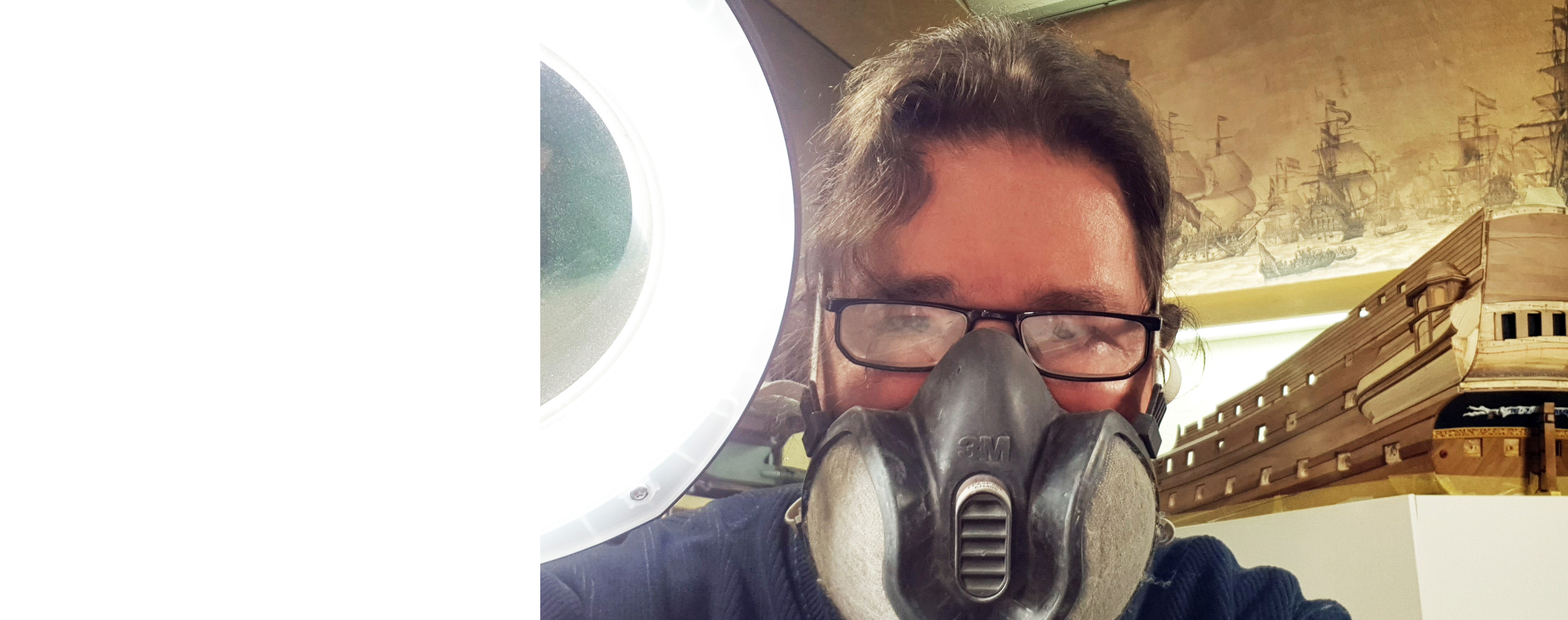
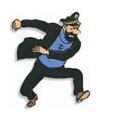

.thumb.jpg.19d7c06f7d035fa4ea5c188b9a5cd51d.jpg)
.thumb.jpg.72c7d30a6d25b79e3224306092bfc471.jpg)
.jpg.63fc14e95e7491e6a5a132b0d19cd082.jpg)
_a.thumb.jpg.fa8e39f3aa5b14174d18e60f0cdd83ff.jpg)
.thumb.jpg.8dc6352b2f4a9c479d06783a2913745d.jpg)
.thumb.jpg.5f80332eb5e9ab28f86025a14b720e2a.jpg)
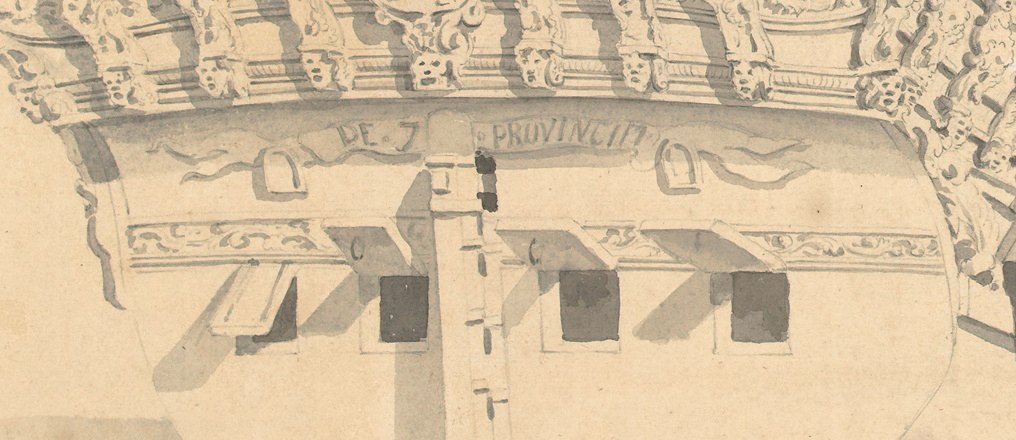
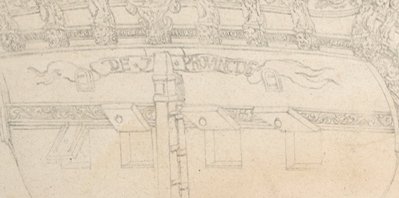
.jpg.2eaf52489563e186c702be6c81eeb598.jpg)
.thumb.jpg.190d6014cdaed0300371c1283ebd6d11.jpg)
.thumb.jpg.081906635f2cc1c4c70449a8e5ac48a2.jpg)
.thumb.jpg.7318c639d2093fd253cf302dc55f7c12.jpg)
.thumb.jpg.8811b51e886df43d84c70f66d77e5fac.jpg)
.thumb.jpg.974b4e4b1d7ab5cd1345d1042d95556b.jpg)
.thumb.jpg.7996aa2051d1b469943393126134a0f4.jpg)
.thumb.jpg.02fcf6d5099b1a224545e21babb23437.jpg)
.thumb.jpg.3993ce4a1c81a4f084d5618b6f28a152.jpg)
.thumb.jpg.5b7d99b333bf6fcd77ac66cdb7fe404c.jpg)
.thumb.jpg.3c22fe5470236093cfb34aae6022e06b.jpg)
.thumb.jpg.c0fd11d85971661cc5739762db952e41.jpg)
.thumb.jpg.9374d7c000372c68ad8485528b064a7e.jpg)
.thumb.jpg.b1708c338defb9aa60c5cfff9b36a36b.jpg)
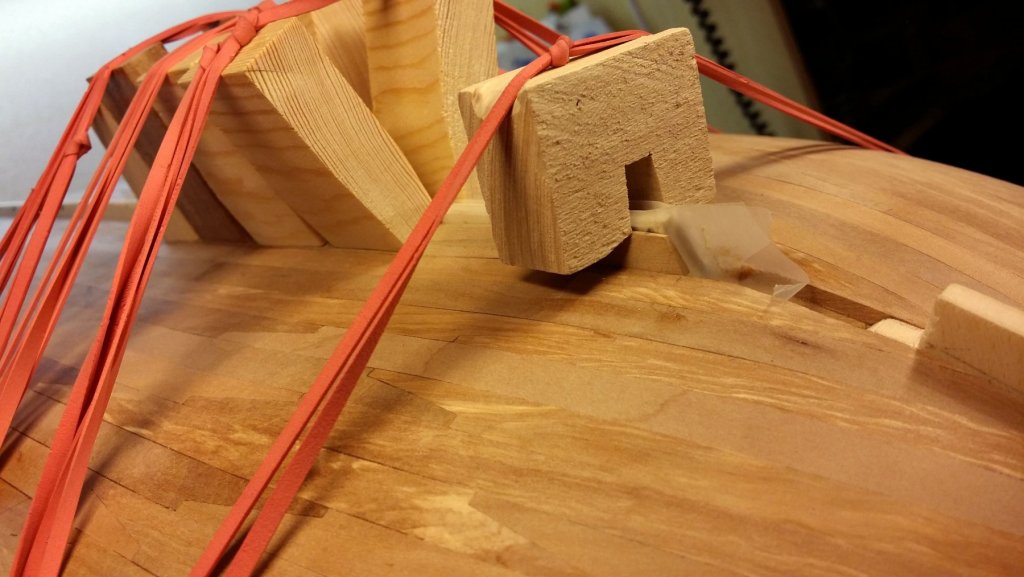
.thumb.jpg.a65ca9b0ef29b1eeb3881109af339e74.jpg)
.thumb.jpg.99aa6ea4fef48ec8e4cfc28ff067b0fa.jpg)
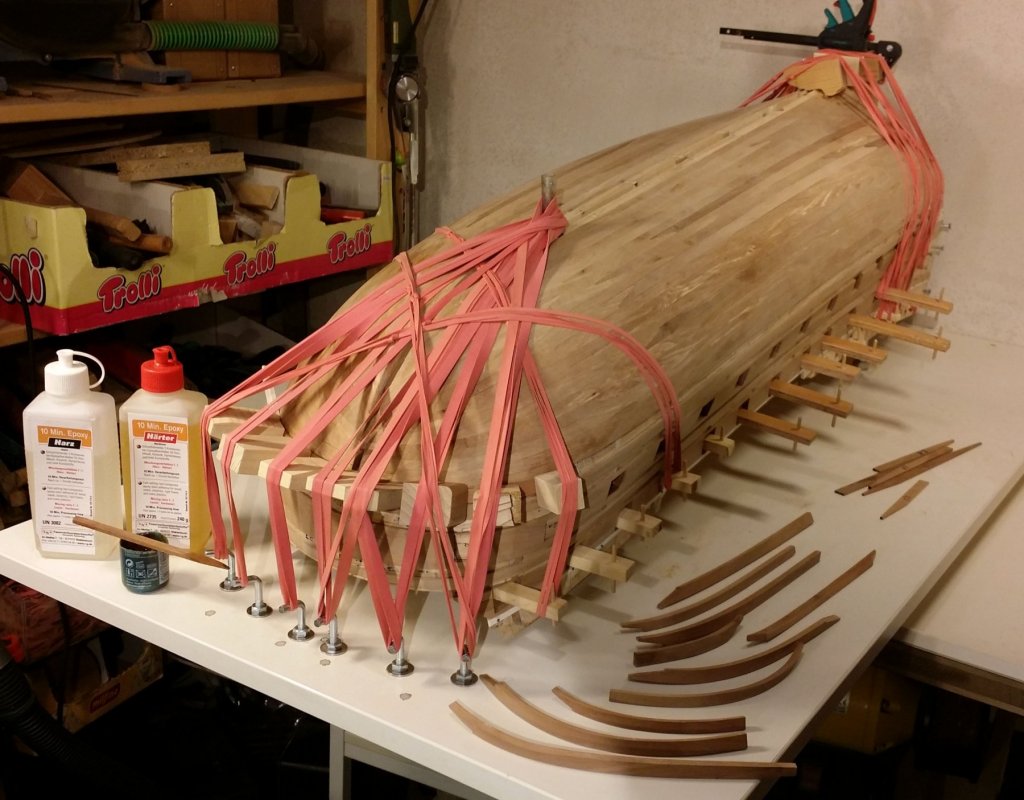
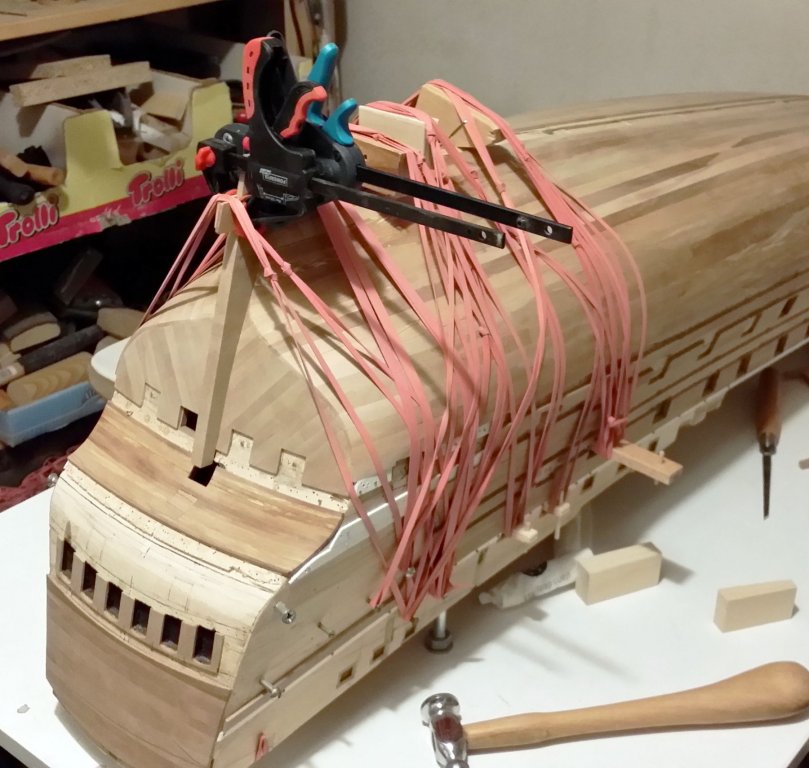
.thumb.jpg.8364c3f04cf67e4a812b2ff52de03851.jpg)
.thumb.jpg.e7e084c8e74265146bb44c4bd96104e3.jpg)
.thumb.jpg.c62f45a294ddfb151b283159b637b6a4.jpg)
.thumb.jpg.098b4b5463da7adcd8288fdd9293f4d8.jpg)
.thumb.jpg.39a174eb1ff272d04d92b05458418647.jpg)
